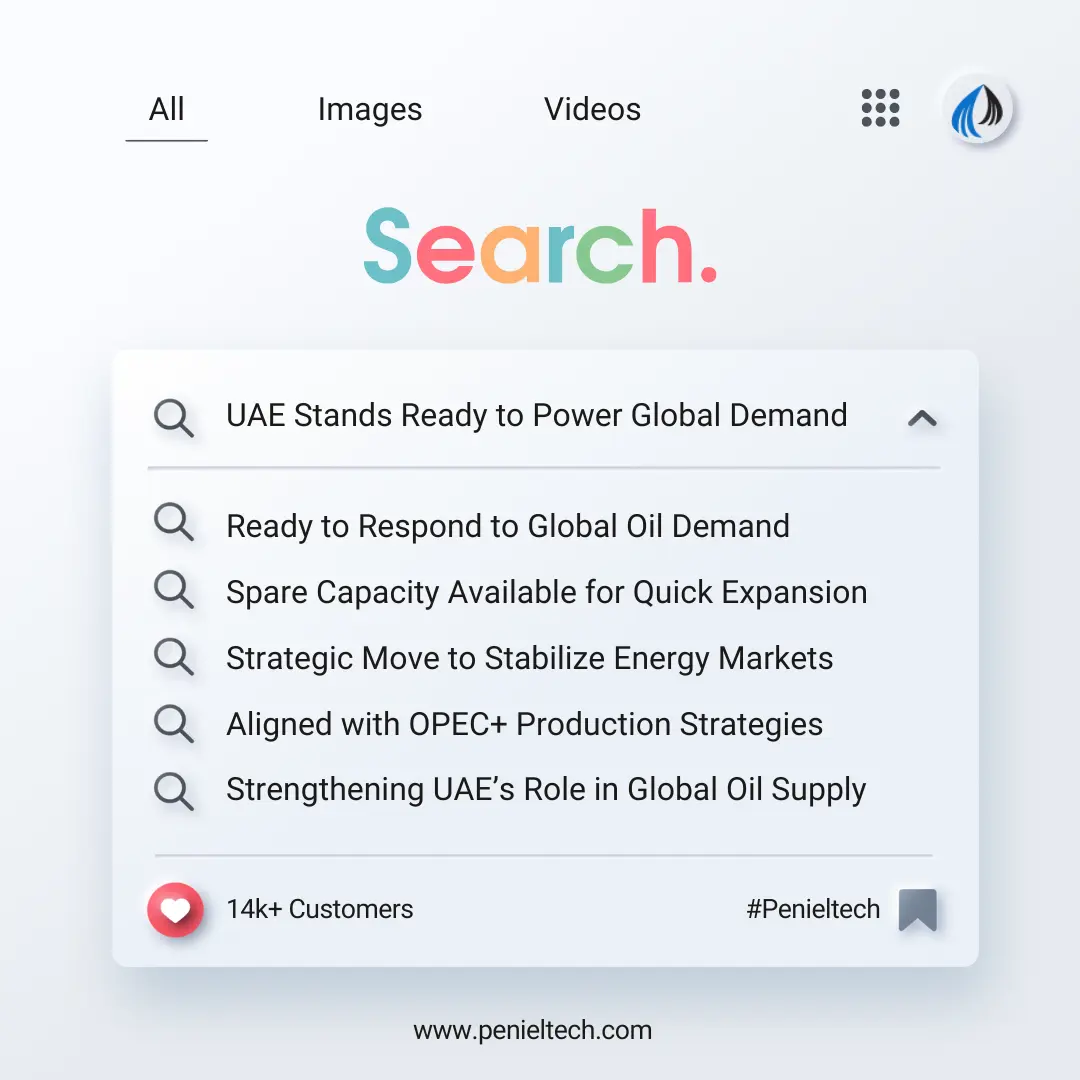UAE is Ready for Another Oil Capacity Boost If Markets Require
What It Signals and Why Smarter Industry Management Matters More Than Ever

The UAE never waits for market trends; it builds ahead of them. That approach was on full display again this July, when the country confirmed that its oil production capacity isn’t stopping at the expected 5 million barrels per day (BPD). If the market demands more, the UAE is all set to push further, towards 6 million BPD in the post-2027 horizon.
Well, there are very few industries where strategic timing can reshape global balance sheets. Oil & gas is one of them. So when the energy minister of the UAE, Suhail Mohamed Al Mazrouei, signals a potential jump in production capacity, markets start recalibrating. Undoubtedly, behind that statement, there lies years of planning, billions in infrastructure, and a deeper push toward energy leadership that isn’t slowing down.
This is beyond a headline for the energy sector. It’s a wake-up call for every operation that plays a role in the oil & gas value chain.
The Numbers Behind the Headlines
The number says it all. The UAE is currently producing approximately 3.2 million barrels of oil per day. But it has a production capacity of 4.85 million barrels per day. The story doesn’t end here; it’s working towards increasing the capacity to 5 million barrels per day by 2027.
Now, the OPEC+ has granted the UAE a larger quota this year after the country’s claim about expanding its oil production capacity. Not only that, the Energy Minister Suhail Mohamed Al Mazrouei recently stated the possibility of expanding the capacity up to 6 million barrels per day if the global market requires it.
Well, let’s put that into perspective. At 6 million barrels per day, the UAE wouldn’t just climb rankings, it would secure its place as the fourth-largest oil producer in the world, ahead of countries like Canada, China, Iraq, and Iran. Only the U.S., Saudi Arabia, and Russia would sit higher. That’s nearly 6% of the world's oil demand potentially flowing from one nation. That kind of readiness doesn’t just come from oilfields; it comes from infrastructure discipline and systems that can absorb expansion without losing clarity.
What OPEC+ is Signaling with Output Quota Adjustments
This move isn’t an isolated move. OPEC+ has already initiated a phased unwinding of production cuts across member countries. The group plans to add 2.5 million BPD of output between April and September 2025. And out of that, the UAE alone receives a 300,000 BPD increase in quota.
OPEC+ doesn’t hand out these increases casually. This quota rise signals confidence in the UAE’s production capabilities, supply chain discipline, and ability to meet rising demand without destabilizing internal operations.
What This Means for Operational Management
What’s holding most firms back isn’t intent, it’s architecture. They’re trying to grow their footprint while using systems that were never built for multi-site, multi-phase energy operations.
The warning signs are always there:
- Too many manual handovers.
- Delays in compliance reporting.
- Missed equipment checks.
- Duplicate data entries.
- No centralized project overview.
So, managing oil and gas operations at this scale isn’t just volume. It’s about visibility, accuracy, and control. It’s nearly impossible to manage an extra 1 million barrels a day with spreadsheets and legacy systems.
Power Your Oil & Gas Operations
End-to-end business tools built for energy sector efficiency.
You need an oil and gas industry management solution that:
- Track inventory across multiple sites in real time.
- Monitor field operations and downtime.
- Integrate asset maintenance into one unified dashboard.
- Automate procurement cycles.
- Streamline financials with region-specific compliance.
More importantly, you need these solutions to be scalable. Because once the switch is flipped and production goes up, there’s no pause button.
The Role of Data in the Next Oil Expansion
Data won’t just support decision-making in the coming years. It will drive it. The companies that will thrive under the UAE’s new oil roadmap are the ones that can answer tough questions instantly:
- What’s our per-barrel cost per site, live?
- How many maintenance hours were logged this week?
- Where is downtime spiking, and why?
- What’s the ROI on our newest lease?
These answers don’t come from “checking with accounts” or waiting for the field team to respond. They come from a centralized oil and gas industry management solution that translates data into insight, on demand.
ERP Tailored for Energy Giants
Manage finance, supply chain, and compliance with one platform.
Risk isn’t Going Away, But Control Is Possible With The Best oil and gas industry management solution
Scaling production also means scaling risk. From compliance gaps to environmental tracking, oil and gas firms deal with intense scrutiny.
That’s why oil and gas ERP systems must do more than just manage inventory and finances. They need to:
- Enable HSE (Health, Safety, and Environment) reporting.
- Capture regulatory documentation across jurisdictions.
- Track emissions and waste outputs with audit trails.
- Maintain historical logs for every critical decision.
Remember, this isn’t overengineering. It’s making sure tomorrow’s growth doesn’t lead to tomorrow’s shutdowns.
So, the UAE isn’t waiting for market pressure to act. It’s building optionality in advance, signaling confidence, capability, and control.
If you’re part of the energy value chain—as a supplier, contractor, or operations firm, now is the moment to align your digital infrastructure with what the future demands.
An oil and gas industry management solution won’t do your job for you. But it will multiply the speed, accuracy, and scalability of how you do it.
Smarter Management for Oil Business
Optimize workflows, reporting, and decision-making with ease.
